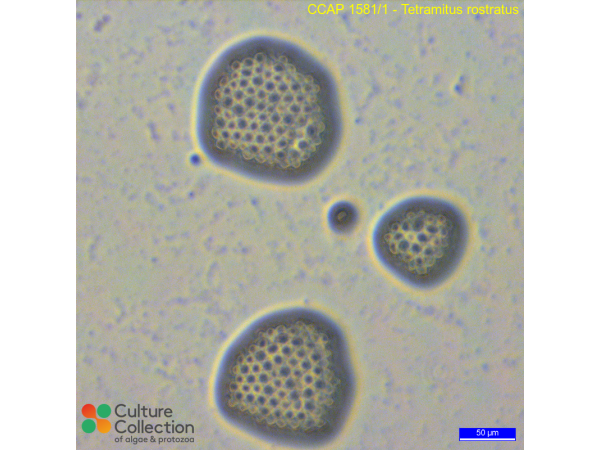References [ 9 ]
Page FC & Blanton RL (1985) The Heterolobosea (Sarcodina: Rhizopoda) a new class uniting the Schizopyrenida and the Acrasidae (Acrasida). Protistologica 21(1): 121-132.
DOI: none
De Jonckheere JF, Brown S, Walochnik J, Aspöck H & Michel R (2005) Morphological investigation of three Tetramitus spp. which are phylogenetically ver closely related: Tetramitus horticolus, Tetramitus russelli n. comb. and Tetramitus pararusselli n. sp. European Journal of Protistology 41: 139-150.
De Jonckheere JF & Brown S (2005) Isolation of a vahlkampfiid amoeba from a contact lens: Tetramitus ovis (Schmidt, 1913) n. comb. European Journal of Protistology 41: 93-97.
Murase J, Kawasaki M & De Jonckheere JF (2010) Isolation of a new heterolobosean amoeba from a rice field soil: Vrihiamoeba italica gen. nov., sp. nov. European Journal of Protistology 46: 164-170.
Boucard TK, Parry J, Jones K & Semple KT (2004) Effects of organophosphate and synthetic pyrethroid sheep dip formulations on protozoan survival and bacterial survival and growth Fems Microbiology Letters 47: 11-127.
Garstecki T, Brown S & De Jonckheere JF (2005) Description of Vahlkampfia signyensis n. sp. (Heterolobosea), based on morphological, ultrastructural and molecular characteristics. European Journal of Protistology 41: 119-127.
De Jonckheere JF & Brown S (2005) The identification of Vahlkampfiid amoebae by ITS sequencing. Protist 156: 89-96.
Brown S & De Jonckheere JF (2004) Isolation of a new vahlkampfiid amoeba from soil: Paravahlkampfia lenta n. sp. European Journal of Protistology 40: 289-294.
Brent, M (1954) Nutritional studies on the amoebo-flagellate, Tetramitus rostratus Biological Bulletin 106(3): 269-278.
Sequences [ 1 ]
EMBL/Genbank Links
(Bold text = submission by CCAP staff or collaborators)
Division/Phylum: Discoba Class: Heterolobosea Order: Schizopyrenida
Note: for strains where we have DNA barcodes we can be reasonably confident of identity, however for those not yet sequenced we rely on morphology
and the original identification, usually made by the depositor. Although CCAP makes every effort to ensure the correct taxonomic identity of strains, we cannot guarantee
that a strain is correctly identified at the species, genus or class levels. On this basis users are responsible for confirming the identity of the strain(s) they receive
from us on arrival before starting experiments.
For strain taxonomy we generally use AlgaeBase for algae and
Adl et al. (2019) for protists.
| Attributes |
| Authority | Perty 1852 |
| Isolator | Balamuth (1950) |
| Collection Site | "sterile" human urine specimen Austin, Texas, USA |
| Notes |
Isolation: washing, dilution, plating; clonal; amoebo-flagellate, Brent (1954) notes that both stages of this strain appeared in the bacterized maintenance broth, only the amoeboid form was present on solid agar-containing media or under axenic conditions. |
| Axenicity Status |
Monoxenic |
| Area |
North America |
| Country |
USA |
| Environment |
Human |
| GMO |
No |
| Group |
Protozoa |
| In Scope of Nagoya Protocol |
No |
| ABS Note |
Collected pre Nagoya Protocol. No known Nagoya Protocol restrictions for this strain. |
| Collection Date |
1950 |
| Pathogen |
Not pathogenic: Hazard Class 1 |
| Strain Maintenance Sheet |
|
| Toxin Producer |
Not Toxic / No Data |
| Type Culture |
No |
| Taxonomy WoRMS ID |
628127 |


